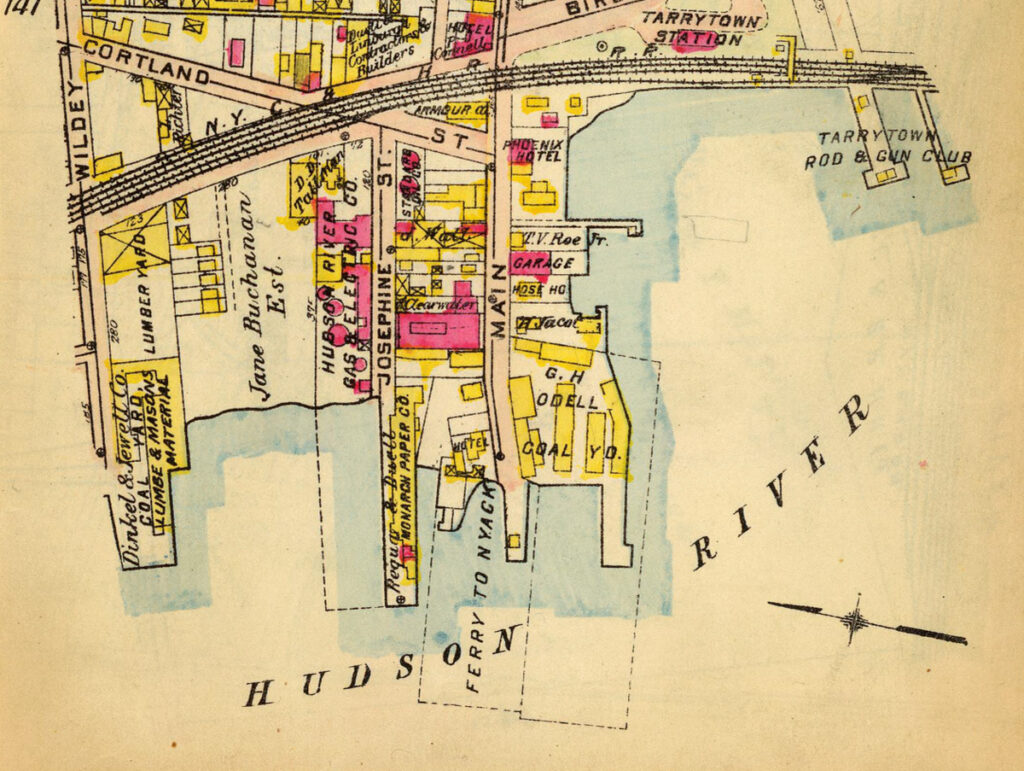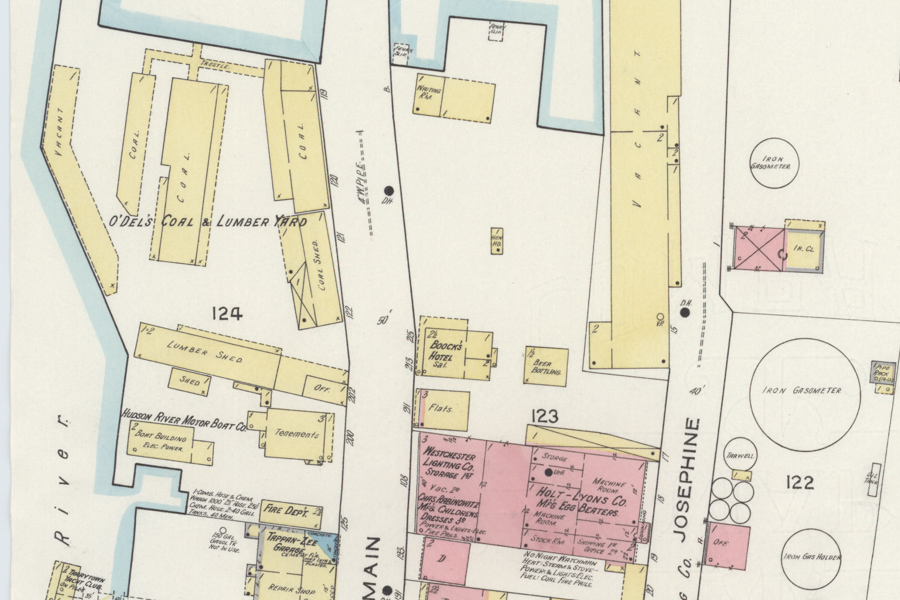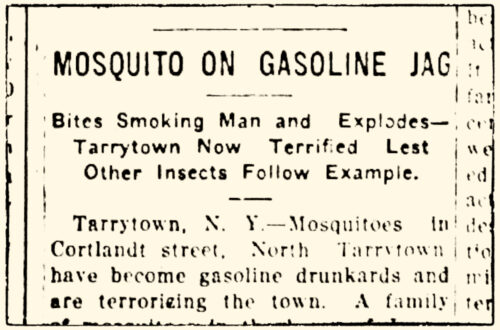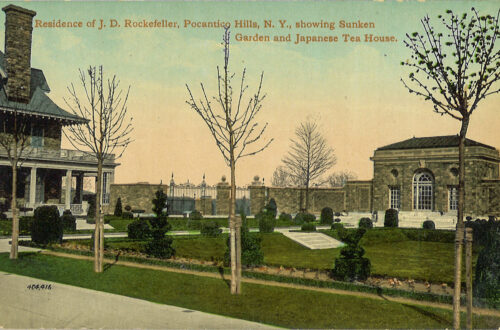
Holt-Lyon Company
Over the course of its existence, the Holt-Lyon Company manufactured a variety of hand-powered kitchen appliances like cream whips and egg beaters, bread slicers, and mayonnaise mixers. Holt-Lyon was incorporated around the year 1900 for capital of $20,000 (about $700,000 in 2023 dollars). The business was the joining of forces by Nelson Lyon, who had manufactured egg beaters near Albany, New York, with Thomas Holt, who held patents for improved egg beater designs. The partners leased a factory on Josephine Street on the Tarrytown, New York waterfront for their steam-powered equipment.
Hand-powered egg beaters and similar hand-held mixers first appeared in US patents filed in the 1850s. Their innovative utility made them household staples. Their popularity resulted in thousands of competing variations manufactured and marketed across the country.
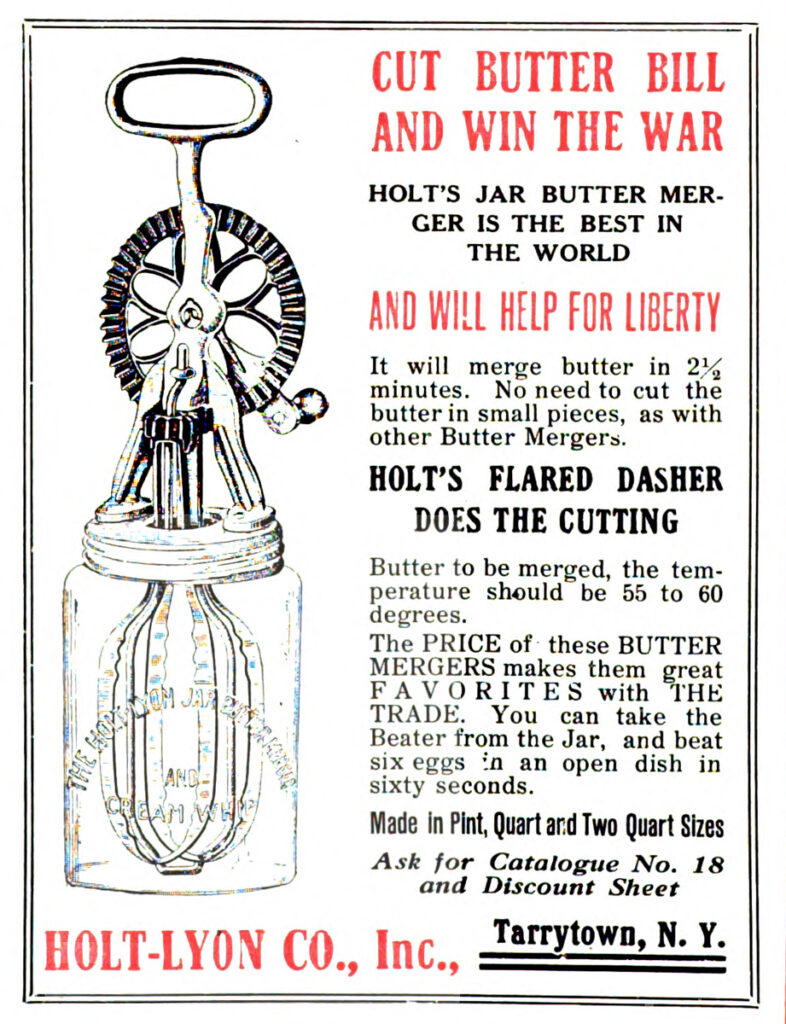
Advertisements show Holt-Lyon soon ventured into other metal household items that could be manufactured on their casting and stamping equipment. A 1904 advertisement featured Holt’s Improved Dover Egg Beaters, Lyon Egg Beaters, and Cream Whips, and the Cleaner Rug and Carpet Beater. They also made heel stiffeners for extending the life of shoes and flue stops for damping chimneys. The company sold almost exclusively to wholesalers, largely through space ads in trade publications. A 1904 business trip by Lyon resulted in expanding the market to England. In 1908 he made a second sales trip abroad with stops in England, France, Germany, and Denmark.
Sometime after 1910, Holt-Lyon began combining their metal whips and beaters with glass jars to create different categories of product. The Holt Butter Merger matched a cream whip to a branded mason jar, allowing the consumer to recombine softened butter with milk. The company’s trade advertisements during World War I suggested retailers market this device as a way to stretch the household budget while contributing to America’s war effort.
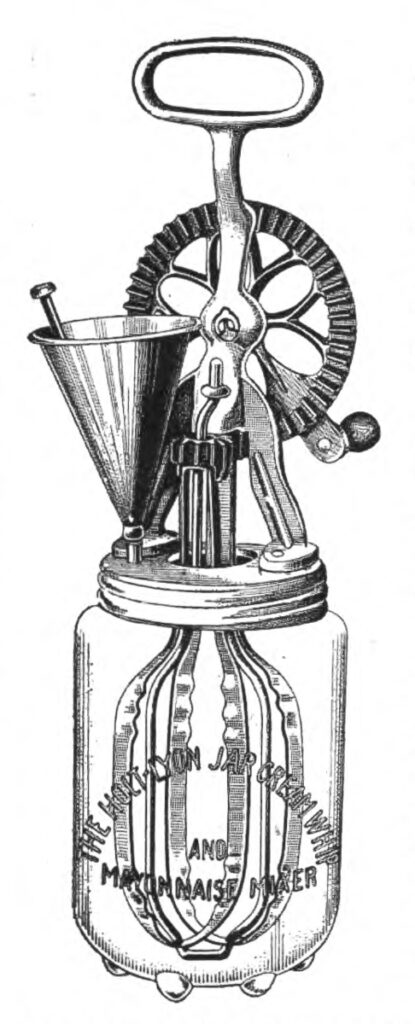
Adding a tin funnel to the cream whip created a new multipurpose device–the Holt-Lyon Cream Whip and Mayonnaise Mixer. Even with both hands occupied holding and operating the whip, the home cook could rely on the funnel to slowly and steadily drip oil into the egg mixture. Holt-Lyon sold the mayonnaise maker with and without the jar.
Around 1921 Tarrytown shoe merchant Ulysses Grant Teetsell, whose store was at 5 Main Street, purchased the company. (Jeff Canning and Wally Buxton in their History of the Tarrytowns, Westchester County, New York, from Ancient Times to the Present date the purchase to 1915). By 1922 the company had moved operations from Josephine Street in Tarrytown to Teetsell Street in Saugerties, New York. Teetsell, president of the firm, died in January 1927 leaving the company in the hands of his son, Harold, who held the patent on the Holt-Lyon carpet beater. Both U. Grant and Harold Teetsell are buried in Katsbaan Cemetery in Saugerties.
Holt-Lyon vanishes from the public record after 1927, likely undone by the wave of electric appliances hitting the market.
Holt-Lyon Company Tarrytown Location
Back to Josephine Street for a moment. Nearby on the same block were the Tarrytown Wall Paper Co., Westchester Lighting Co. (supplying gas and electricity), and Tarrytown Pub. Co., a printing plant. A block away at the foot of Main Street was a waterfront hotel, Tarrytown Boat Works, and a Hudson River ferry to Nyack. All this is gone and there is no Josephine Street on any current map.
In the century from Holt-Lyon’s departure to today, landfill has extended the shoreline further into the Hudson River. On the map below, the Tarrytown Rod & Gun Club docks are now under the present tennis courts at the Tarrytown recreation center. The Standard Oil tanks at the intersection of Josephine and the railroad tracks have been replaced by the clubhouse for Hudson Harbor. The street itself ended in the middle of what is now the courtyard between 20 and 22 Orchard Drive in the same condo complex.
